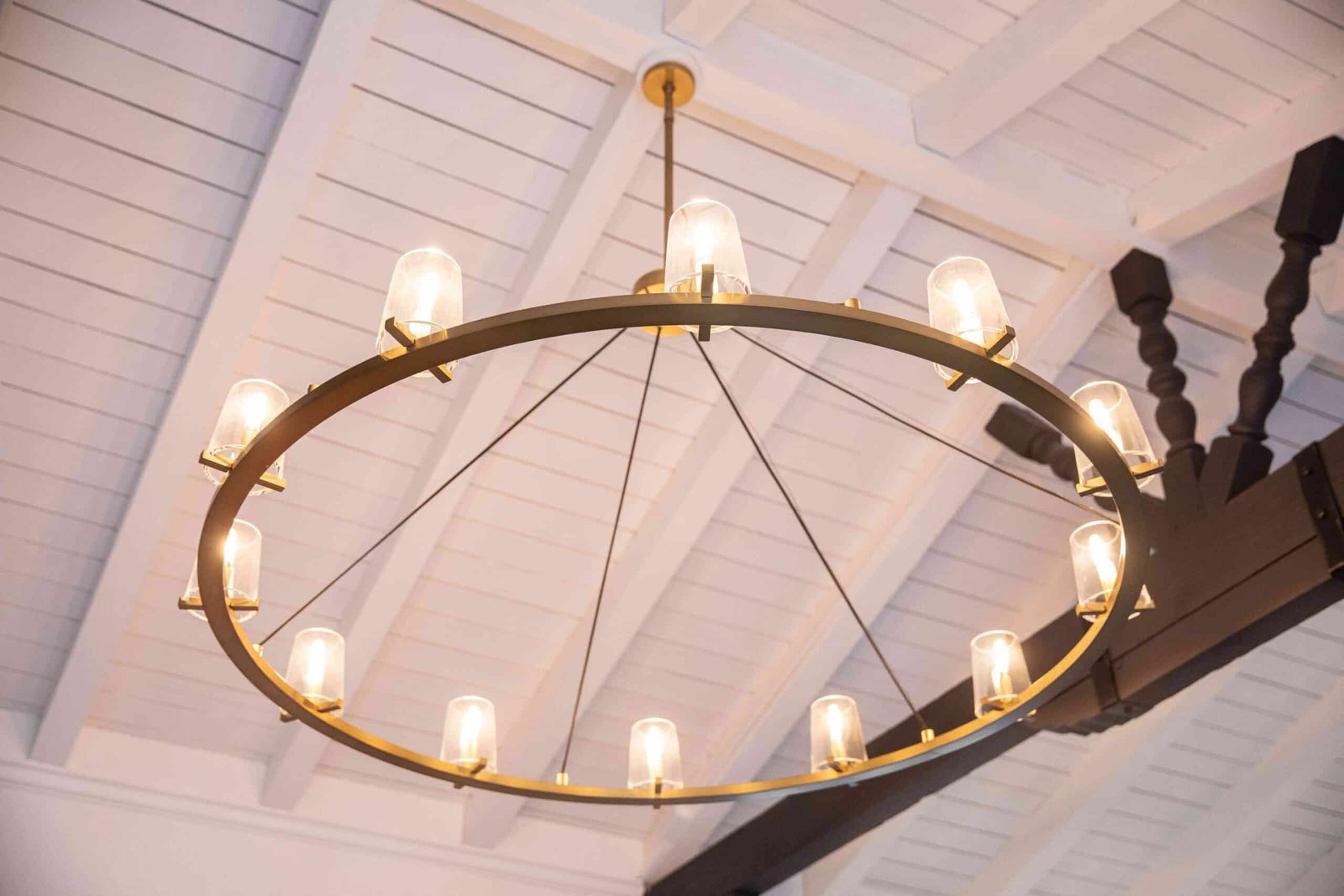
Top 5 Chandelier Techniques to Optimize Your Home Lighting
Chandeliers are known as a symbol of luxury and sophistication in the interior design of your space. It is a real statement piece available in traditional and modern settings. It has added elegance and character to many home settings for centuries.
These fantastic lighting fixtures provide illumination and serve as artistic focal points that elevate the aesthetics of your internal space. The rule of thumb for choosing a chandelier is that the bigger sizes are better.
In this post, we will discuss chandelier lighting techniques that will allow you to create an ambiance that will reflect your style and enable you to harness the full potential of these fixtures.
Table of Contents
ToggleSignificance of Chandelier in Interior Designing
Chandeliers hold a profound significance in interior design that fuses functionality with artistry and drama, adding a touch of grandeur and personality to your space.
These intricate craftsmanship works can elevate your interior space to new levels of elegance and create a sense of refinement. The chandelier choice may define a room by complementing the overall design theme and directing the selection of appropriate furnishings and accessories.
They are crucial components in creating appealing and memorable living spaces. Therefore, their significance in interior design goes beyond their primary purpose.
Top 5 Chandelier Lighting Techniques
1. Ensure Ideal Placement and Size
The ideal placement and size of the chandelier are essential to achieve balanced lighting. Here are some tips for ensuring perfect order and size:
- Consider your room’s ceiling height and dimensions before choosing the chandelier size.
- According to the general recommendation of placing the chandelier, place the chandelier at least 7 feet above the floor. Hang the chandelier 30 to 36 inches above your dining table for the ideal placement.
- The chandelier’s diameter must correspond to the size of the space; a more prominent room may support an enormous chandelier.
2. Use a Layered Lighting Scheme
Include chandeliers with task, accent, and ambient lighting in a layered lighting plan.
Add task lighting for specialized tasks and accent lighting to draw attention to decorative or structural details. The ambient light that chandeliers provide is excellent for establishing the mood of the space.
3. Adjust Chandelier Brightness
You can adjust the chandelier brightness by installing dimming controls according to your moods and occasions. Dimming improves energy economies and flexibility while fostering a welcoming and pleasant ambiance.
4. Select the Bulb Carefully
Select the bulb that matches best with the chandelier design and can produce the desired lighting effect. Incandescent lights produce warm light, but LEDs are energy-efficient and have a range of color temperatures.
Clear lights emphasize glitter and brightness, while frosted bulbs spread light to lessen glare. Choose the bulb wisely according to your preferred personal style and taste. For those seeking to infuse their space with a distinctive blend of modern sophistication and artistic flair, Regina Andrew offers a collection that promises to electrify any room with its unique and sustainable lighting designs.
5. Maintenance and Cleaning
Chandeliers should be cleaned regularly to keep them brightening up. Dust and filth should be removed using a soft, lint-free cloth from the fixture and its parts. Consider using a moderate cleaning agent and delicate brushing to access corners on more elaborate chandeliers.
Tips for Cleaning and Maintainence
- Choose a microfiber cloth for dusting regularly and avoid applying extensive pressure on its delicate components.
- Ensure your safety before cleaning by turning off the electricity supply.
- Use warm water and a non-abrasive cleaner to wipe the components gently. Rinse with clean water and dry thoroughly.
- Remove the chandelier’s bulbs using the screws provided before cleaning.
- Use a soft-bristle or cosmetics brush to clean fine details and hard-to-reach places.
Techniques For Illuminating Grand Spaces with Large Chandeliers
The large chandelier can transform your space into a captivating environment by following the methods discussed below.
1. Bulb Arrangement
Light distribution is pivotal in creating ambiance, which depends on the bulbs’ arrangement—symmetry in the bulb arrangement in creating a harmonious visual. Chandeliers come in various designs, such as candelabra-style fixtures and those with multiple arms and levels. Some contemporary designs embrace asymmetry to offer a distinctive and imaginative touch.
2. Light and Shadow Play
Large chandeliers are experts at producing captivating patterns of light and shadow. The play of light and shadow is done by intricate design elements such as crystals, glass beads, and decorative elements.
These elements interact with the light to create complex shadow patterns on the ceiling and walls adding complexity and depth to the room.
3. Enhancing Architectural Features
Large chandeliers enhance the architectural features of your space by strategically placing them. You may highlight specific architectural elements like columns, stairways, or alcoves by placing objects next to or above them, making the space more aesthetically appealing.
4. Ambient and Focal Lighting
The central placement of the chandelier provides ambient and focal lighting by making it a natural focal point in the room. Its radiant glow captures people’s attention and creates an ambiance emitted by chandeliers. It will provide a warm and inviting glow setting the tone for various activities.
5. Dimming Capabilities
Chandelier dimming capabilities allow you to adjust the intensity of the light according to the occasion. Dimming improves illumination versatility while simultaneously promoting energy efficiency.
FAQs
Can Rooms with Low Ceilings Employ Large Chandeliers?
Large chandeliers can be utilized in areas with low ceilings, but only after giving it excellent thought. Choose chandeliers with a more minor, more compact form. Moreover, pick designs that don’t visually overpower the area, and make sure the chandelier is placed at the proper height to prevent headroom concerns.
How Does the Large Chandelier Improve the Room’s Architectural Features?
You may highlight architectural details like columns, alcoves, or stairs by carefully positioning a huge chandelier near or above them. The architectural characteristics are made more noticeable and aesthetically pleasing by the bright illumination of the chandelier, which emphasizes the intricate details and designs.
Can chandeliers be placed outdoors?
Yes, there are chandeliers explicitly made for outdoor usage. These may lend a sense of elegance to patio dining areas, porches, or pergolas and are often made of weather-resistant materials.
Wind Up
Chandelier lighting techniques involve imaginative ability and careful planning to transcend the illumination and atmosphere into a room’s architecture. Their elevating fixtures reflect the personality and aspiration of the homeowner and enhance the overall aesthetics.
By mastering the techniques discussed in the post, you can open the door to design environments that ring with coziness, grace, and the enduring fascination of chandelier lighting.





